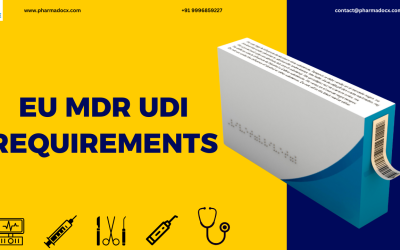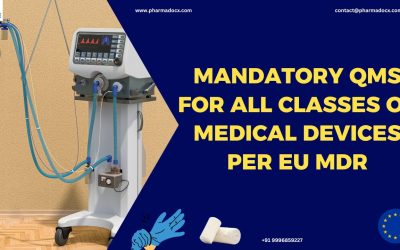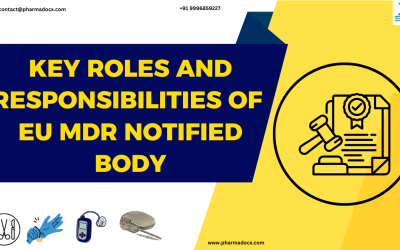Otolaryngology is commonly known as the ENT (Ear, Nose, and Throat) field of medicine. It is a specialized field dedicated to diagnosing, treating, and managing conditions related to the ear, nose, and throat. When individuals encounter issues with their head or neck, they are typically directed to an otolaryngologist. Moreover, these experts not only treat adults but also address pediatric ENT concerns. For those venturing into the establishment of ENT-focused medical facilities, it’s crucial to be equipped with the right medical devices. However, a CDSCO registration for ENT medical devices is mandatory to market them in India. In this blog, we will delve into the CDSCO ENT medical devices license application process.
Evolving Landscape of ENT Medical Devices
The global market for ENT Medical Devices is on an upward trajectory. It has an estimated growth rate of 6% between 2020 and 2030. This growth is attributed to increased health consciousness, an aging global population, and rapid technological advancements in the medical sector. Currently, the medical devices sector is recovering from the global pandemic’s impacts. Thus, technological innovations will play a pivotal role in shaping the industry’s future.
CDSCO ENT Medical Devices Classification
The Medical Device Rules, 2017, governs the production, sale, and distribution of medical devices in India. CDSCO has categorized medical devices into four distinct classes based on associated risks. The CDSCO medical device classification system has been developed to ease the medical device license application process.
- Class-A: Devices with minimal risk.
- Class-B: Devices with low to moderate risk.
- Class-C: Devices with moderate to high risk.
- Class D: Devices with the highest risk.
Notably, different CDSCO classes have different license forms and application processes. Hence, while applying for CDSCO registration for ENT medical devices, manufacturers are required to check which class their device belongs to. The CDSCO has provided a list of 78 devices for the ENT category. The list detailing which CDSCO each ENT medical device belongs to is as follows:
| S.No. | Medical Device Name | Surgical instruments intended to dissect the adenoids. | Class |
|---|---|---|---|
| 1 | Adenotome | Intended to perform an integrity test on the implantable portion of a cochlear implant (CI) system in situ. | A |
| 2 | Adenotome blade | Intended to mount on adenotome and perform dissection of adenoids. | B |
| 3 | Anchored bone-conduction hearing implant system | Intended to treat hearing impairment due to middle and/or outer ear obstructive pathologies or types of conductive hearing loss. | C |
| 4 | Audiometer testing system | An assembly of electronic reference devices intended to calibrate an audiometer. | A |
| 5 | Audiometer | Intended for evaluation of hearing by generating tones throughout the audible range | B |
| 6 | Otoscope | Intended for visual examination of the outer ear canal and tympanic membrane (eardrum) by direct viewing through the ear opening. | B |
| 7 | Auditory evoked-potential graphic recorder | Intended to record an electrical potential that originates in the auditory pathway of the brain in response to acoustic stimuli. | B |
| 8 | Auditory stimulator | Intended to apply sound stimuli to a patient’s acoustic system. | C |
| 9 | Behind-the-ear air-conduction hearing aid | Intended to compensate for impaired hearing by transmitting amplified sound waves to the eardrum through air. | B |
| 10 | Behind-the-ear air-conduction tinnitus masker | Intended to provide noise of sufficient intensity and bandwidth to mask tinnitus. | B |
| 11 | Behind-the-ear bone- conduction tinnitus masker | Intended to provide ultrasonic broadband noise and/or sweep-frequency stimuli noise of sufficient intensity and bandwidth to mask tinnitus. | C |
| 12 | Cochlear implant assessment system | Constructed to fit the curvature of the head so that it will sit closely under the ear lobe and enable treatments of the ear. | C |
| 13 | Ear bowl | Constructed to fit the curvature of the head so that it will sit closely under the ear lobe and enable treatments of the ear. | A |
| 14 | Ear canal impression tray | Intended to hold and confine the impression material in opposition to the surfaces to be recorded, and to control the impression material while it sets to form the impression of the ear canal. | A |
| 15 | Ear canal light | Intended to illuminate the ear canal. | A |
| 16 | Ear excavator | Intended to minimize bleeding during ear surgery. | A |
| 17 | Ear prosthesis | Intended to reconstruct the external ear by replacing damaged or missing tissue. | C |
| 18 | Ear wick | Intended for recording the changes in electrical potential or impedance, resulting from the movement of the vocal cords during respiration and phonation. | B |
| 19 | Electroglottograph | Intended for recording the changes in electrical potential or impedance, resulting from the movement of the vocal cords during respiration and phonation. | B |
| 20 | Endaural curette | Designed for scraping within the ear canal (e.g., removing wax), and for procedures during middle ear surgery (e.g., removal of the superior bony rim). | A |
| 21 | ENT chair, electric | Designed to support a patient in a seated position, electrically control postion in a way to facilitate ear, nose, throat examination, treatment, and/or minor surgery. | B |
| 22 | ENT chair, mechanical | Designed to support a patient in a seated position, mechanically control postion in a way to facilitate ear, nose, throat examination, treatment, and/or minor surgery. | B |
| 23 | ENT shaver system | Intended to resect/debride soft and osseous (bone) tissue in the nasal cavity or ear region during ear/nose/throat (ENT) or plastic surgery procedures; including functional endoscopic sinus surgery (FESS). | B |
| 24 | ENT surgical microscope | Intended to magnify minute structures (e.g., nerves, vessels) in the performance of ear, nose, and/or throat (ENT) surgery requiring high magnification and adjustable focusing. | B |
| 25 | ENT transilluminator | An electroacoustic instrument designed to evaluate the activity of the auditory pathway of the brain in response to an acoustic signal [auditory brainstem response (ABR)] in patients. | A |
| 26 | Evoked-potential audiometer | Flexible endoscope intended for the visual examination and treatment of the nasopharynx (the upper part of the throat behind the nose). | B |
| 27 | Flexible fibreoptic nasopharyngolaryngoscope | Flexible endoscope intended for the visual examination and treatment of the nasal passages, including the sinus openings, the pharyngeal end of the auditory tube, the larynx, and the vocal cords. | B |
| 28 | Flexible fibreoptic nasopharyngoscope | Flexible endoscope intended for the visual examination and treatment of nasal cavity. | B |
| 29 | Flexible fibreoptic rhinoscope | A hand-held manual surgical instrument intended to be inserted into the naris for the removal of tissue, typically polyps, tumors, and other abnormal tissue from the nasal cavity during ear/nose/throat (ENT) surgery. | B |
| 30 | Flexible fibreoptic sinoscope | Flexible endoscope intended for the visual examination and treatment of the paranasal sinuses during an ear/nose/throat (ENT) intervention. | B |
| 31 | Flexible video antroscope | Flexible endoscope intended for the visual examination and treatment of a cavity, particularly the pathological changes in the area of the maxillary sinus. | B |
| 32 | Impedance audiometer | Intended to evaluate the functional condition of the middle ear by changing the air pressure in the external auditory canal to measure and graph the mobility characteristics of the tympanic membrane. | B |
| 33 | Nasal septum straightening forceps | Surgical instrument specifically designed to straighten the nasal septum through grasping and manipulation of the bone/cartilage of the septum during nasal reconstructive procedures. | A |
| 34 | ENT Nasal snare | Intended to be implanted for the functional reconstruction of segments of the ossicular chain (malleus, incus, and/or stapes bones). | B |
| 35 | Ossicular prosthesis, partial | Intended to be implanted for the functional reconstruction of segments of the ossicular chain (mallues, incus, and/or stapes bones). | C |
| 36 | Otoscope, endoscopic | Intended to be used in otology mainly for observation, diagnosis, and treatment of the outer and/or middle ear. | B |
| 37 | Tonsil knife | Intended for the removal of the tonsils during a surgical intervention. | A |
| 38 | Tracheal bistoury | Designed for opening abscesses or slitting up sinuses and/or fistulas in the trachea. | A |
| 39 | Middle ear mold | A middle ear mold is a preformed device that is intended to be implanted to reconstruct the middle ear cavity during repair of the tympanic membrane. | C |
| 40 | Fully-implantable middle ear implant system | An ear, nose, and throat electric or pneumatic surgical drill is a rotating drilling device, including the handpiece, that is intended to drive various accessories, such as an ear, nose, and throat bur, for the controlled incision or removal of bone in the ear, nose, and throat area. | C |
| 41 | Larynx prosthesis | A device used for replacement and restoration of the laryngeal function, or for maintenance of patency of the larynx. | C |
| 42 | Ossicular prosthesis, total | A sterile device intended to be implanted for the total functional reconstruction of the ossicular chain (mallues, incus, and stapes bones) to facilitate the conduction of sound waves from the tympanic membrane to the inner ea to treat conductive hearing loss from traumatic or surgical injury, otosclerosis, congenital fixation of the stapes, or chronic middle ear disease. | C |
| 43 | Otoscope, direct | Inteded for examination of the outer ear canal and tympanic membrane (eardrum) by direct viewing through the ear opening. | B |
| 44 | Soft-tissue surgical forceps, alligator | A long, thin, hand-held manual surgical instrument designed to facilitate grasping and manipulation of soft-tissues/anatomical structures [typically during ear/nose/throat (ENT) surgery]. | B |
| 45 | Epistaxis balloon | Device intended to control internal nasal bleeding by exerting pressure against the sphenopalatine artery. | B |
| 46 | Eustachian tube balloon dilation system | The system is intended for use in dilating the cartilaginous portion of the Eustachian tube for treating persistent Eustachian tube dysfunction. | B |
| 47 | Ear, nose, and throat electric or pneumatic surgical drill | Device is used for the purpose of coagulating and vaporizing soft and fibrous tissues, including osseous tissue while performing ENT surgical procedures. | C |
| 48 | Argon laser for otology, rhinology, and laryngology | Device is used for the purpose of coagulating and vaporizing soft and fibrous tissues, including osseous tissue while performing ENT surgical procedure. | C |
| 49 | Ear, nose, and throat microsurgical carbon dioxide laser | Device intended for the surgical excision of tissue from the ear, nose, and throat area while performing microsurgical procedures to excise lesions and tumors of the vocal cords and adjacent areas. | C |
| 50 | Esophagoscope (flexible or rigid) | Device intended to examine or treat esophageal malfunction symptoms, esophageal or mediastinal disease, or to remove foreign bodies from the esophagus. | B |
| 51 | Mediastinoscope and accessories | Device intended to examine or treat tissue in the area separating the lungs for diagnosis of tumors and lesions and to determine whether excision of certain organs or tissues is indicated. | B |
| 52 | Laryngostroboscope | A laryngostroboscope is a device that is intended to allow observation of glottic action during phonation. | B |
| 53 | Bone particle collector | A bone particle collector is a filtering device intended to be inserted into a suction tube during the early stages of otologic surgery to collect bone particles for future use. | A |
| 54 | Suction antichoke device | A suction antichoke device is a device intended to be used in an emergency situation to remove, by the application of suction, foreign objects that obstruct a patient’s airway to prevent asphyxiation to the patient. | C |
| 55 | Tongs antichoke device | A tongs antichoke device is a device that is intended to be used in an emergency situation to grasp and remove foreign objects that obstruct a patient’s airway to prevent asphyxiation of the patient. | C |
| 56 | Powered nasal irrigator | A powered nasal irrigator is an AC-powered device intended to wash the nasal cavity by means of a pressure-controlled pulsating stream of water. | B |
| 57 | External nasal splint | An external nasal splint is a rigid or partially rigid device intended for use externally for immobilization of parts of the nose. | A |
| 58 | Antistammering device | An antistammering device intended to minimize a user’s involuntary hesitative or repetitive speech. | B |
| 59 | External upper esophageal sphincter compression device | An external upper esophageal sphincter compression device is intended to apply external pressure on the cricoid cartilage for the purpose of reducing the symptoms of laryngopharyngeal reflux disease. | C |
| 60 | Wireless air-conduction hearing aid | A wireless air-conduction hearing aid is intended to compensate for impaired hearing that incorporates wireless technology in its programming or use. | B |
| 61 | Hearing aid calibrator and analysis system | A hearing aid calibrator and analysis system is an electronic reference device intended to calibrate and assess the electroacoustic frequency and sound intensity characteristics emanating from a hearing aid, master hearing aid, group hearing aid or group auditory trainer. | B |
| 62 | Tympanic membrane contact hearing aid | A tympanic membrane contact hearing aid is a prescription device that compensates for impaired hearing by vibrating the tympanic membrane through a transducer that is in direct contact with the tympanic membrane. | D |
| 63 | Master hearing aid | A master hearing aid is an electronic device intended to simulate a hearing aid during audiometric testing. | B |
| 64 | Active implantable bone conduction hearing system | The active implantable bone conduction hearing system is intended to compensate for conductive or mixed hearing losses by conveying amplified acoustic signals to the cochlea via mechanical vibrations on the skull bone. | C |
| 65 | Battery-powered artificial larynx | A battery-powered artificial larynx is an externally applied device intended for use in the absence of the larynx to produce sound. | B |
| 66 | Partial ossicular replacement prosthesis | A partial ossicular replacement prosthesis is a device intended to be implanted for the functional reconstruction of segments of the ossicular chain and facilitates the conduction of sound wave from the tympanic membrane to the inner ear. | C |
| 67 | Total ossicular replacement prosthesis | A total ossicular replacement prosthesis is a device intended to be implanted for the total functional reconstruction of the ossicular chain and facilitates the conduction of sound waves from the tympanic membrance to the inner ear. | C |
| 68 | Mandibular implant facial prosthesis | A mandibular implant facial prosthesis is a device that is intended to be implanted for use in the functional reconstruction of mandibular deficits. | C |
| 69 | Sacculotomy tack (Cody tack) | A sacculotomy tack (Cody tack) is a device that consists of a pointed stainless steel tack intended to be implanted to relieve the symptoms of vertigo. | C |
| 70 | Nasal dilator | A nasal dilator is a device intended to provide temporary relief from transient causes of breathing difficulties resulting from structural abnormalities and/or transient causes of nasal congestion associated with reduced nasal airflow. | B |
| 71 | Tympanostomy tube with semipermeable membrane | A tympanostomy tube with a semipermeable membrane is a device intended to be implanted for ventilation or drainage of the middle ear and for preventing fluids from entering the middle ear cavity. | C |
| 72 | Transcutaneous air conduction hearing aid system | A transcutaneous air conduction hearing aid system is a wearable sound-amplifying device intended to compensate for impaired hearing without occluding the ear canal. | C |
| 73 | Acoustic chamber for audiometric testing | An acoustic chamber for audiometric testing is a room that is intended for use in conducting diagnostic hearing evaluations and that eliminates sound reflections and provides isolation from outside sounds. | A |
| 74 | Gustometer | A gustometer is a battery-powered device that consists of two electrodes that are intended to provide galvanic stimulus resulting in taste sensation. | C |
| 75 | ENT cupped forceps | A forcep with a spoon-(dish) like configuration at the distal end, and is used to treat the ear, nose, and throat (ENT), and remove tissue from the body. | A |
| 76 | Tongue depressor | A surgical instrument used to move the tongue to facilitate examination of surrounding organs and tissue. | A |
| 77 | Tracheal dilator | Intended to dilate the tracheal structure and tracheal passageway. | A |
| 78 | Tonsillectome | A manually operated surgical device used to dissect the tonsils. | A |
CDSCO Registration for ENT Medical Devices: Your Detailed Guide
The CDSCO registration for ENT medical devices ensures that healthcare professionals are equipped with the best tools for patient care. Hence, securing the CDSCO ENT medical devices license application is mandatory to manufacture or import medical devices into India. Notably, compliance with CDSCO regulatory guidelines is a testament of the manufacturer’s dedication to patient safety and product quality. Furthermore, staying compliant ensures trust in the brand and helps avoid potential regulatory repercussions. However, navigating the CDSCO medical device license application process is a tricky task. Hence, we have prepared this detailed guide for you.
CDSCO Registration for ENT Medical Devices: License Types
- Manufacturing class A and B ENT devices: MD 5 License is required to manufacture class A and B ENT devices. Moreover, a fee of Rs. 5,000 for the manufacturing license is required. Additionally, Rs. 500 for each distinct device is required. The license has to be obtained from the state licensing authority.
- Manufacturing class C and D ENT devices: MD 9 License is required to manufacture class C and D ENT devices. Moreover, a fee of Rs. 50,000 for the manufacturing license is required. Additionally, Rs. 1,000 for each distinct device is required. The license has to be obtained from the central licensing authority.
- Importing ENT devices into India: MD 15 Import License has to be secured from the CDSCO to import ENT devices into India.
Documents Required for CDSCO Registration for ENT Medical Devices in India
We have provided an overview of the documents required for securing the CDSCO ENT medical device license.
- Plant Master File
- Building Layout with Dimension
- Device Master File
- Organization identity proof
- Sale Deed/Rent Deed of the Premises
- Documents for the team of qualified and experienced staff who can manufacture and test your medical devices.
- Test License, if required for testing the ENT medical device
- Environmental regulation compliance documents
- ISO 13485 Certificate
- Certificate of analysis of 3 consecutive batches
A Step-by-step Guide of the Process for the CDSCO Registration for ENT medical devices
- Device Notification Check: Before initiating the registration process, it’s crucial to verify whether the medical device is on the CDSCO’s notified list.
- Appointing an Indian Representative: Foreign manufacturers are required to designate an Authorized Indian Representative to facilitate the registration process. The authorized agent will act on their behalf in India.
- Documentation: Compile all necessary supporting documents, including clinical trial data and product specifications.
- Application Submission: File the application online on CDSCO’s official online portal.
- Query Resolution: CDSCO may raise queries that have to be promptly and accurately addressed. Furthermore, furnish any documents required to support the response.
- Inspection: Prepare for the CDSCO medical device facility inspection and audit phase.
- License Approval: The CDSCO officials will review the application and verify the documents. Then, if all the criteria are satisfied, CDSCO will grant the license.

Validity of the CDSCO ENT Medical Device License
CDSCO ENT medical device license is valid indefinitely. However, to maintain the validity, the license retention fee has to be paid every 5 years. It is essential to pay the license retention fee well in advance of the expiration date to avoid automatic cancellation.
Common CDSCO License Application Challenges and How to Overcome Them
Manufacturers and importers might face the following challenges while applying for their CDSCO license. Hence, we have provided some tips on how to overcome the challenges.
- Documentation Gaps: Ensuring all documents are up-to-date and meet CDSCO’s requirements. Additionally, compile and arrange the documents per CDSCO guidelines.
- Delays in Query Resolution: Setting up a dedicated team to address CDSCO queries promptly. Delays in CDSCO query resolution should be avoided.
- Inspection Hurdles: Regular internal reviews of the ENT medical device facilities are required to ensure they meet CDSCO guidelines.
Pharmadocx Consultants: Your Ally in Navigating CDSCO Registration for ENT Medical Devices
The CDSCO registration and license application journey can be complicated and arduous. This is where the Pharmadocx Consultants team steps in. Our team of experts simplifies the complexities, ensuring a seamless registration process. From understanding your medical device’s unique requirements to assisting with documentation and liaising with regulatory bodies, Pharmadocx Consultants is your go-to partner. We offer a suite of services tailored for ENT medical device manufacturers:
- Expert Guidance: Assistance throughout the CDSCO medical device registration and license application process.
- Document preparation support: We will help you prepare and compile the necessary documents per CDSCO guidelines.
- Mock Audits: Conducting pre-inspection audits to ensure readiness of the facility for CDSCO inspection.
- Query Resolution: Our team will help you promptly address CDSCO queries.
- End-to-End Support: Comprehensive support from the initial application to license approval. We will provide support till you successfully secure the CDSCO medical device license.
- Learn More
The CDSCO medical device license application process requires extensive knowledge of the CDSCO guidelines. Additionally, expertise in the license application process is required. As medical device manufacturers or importers, it is not possible to stay abreast of the latest CDSCO guidelines. With expert partners like Pharmadocx Consultants, the CDSCO medical device registration journey will be streamlined and efficient for you. Seeking expert guidance for CDSCO registration for ENT medical devices? Drop an email at [email protected] or call/Whatsapp on 9996859227 to let us help you.





